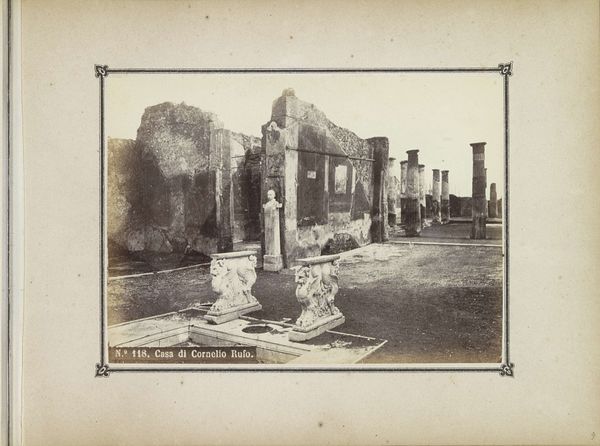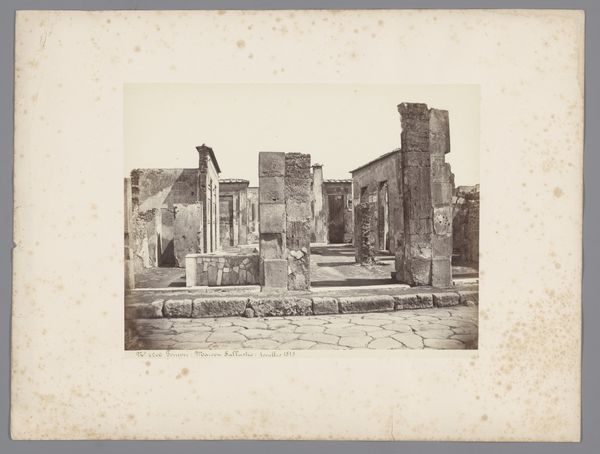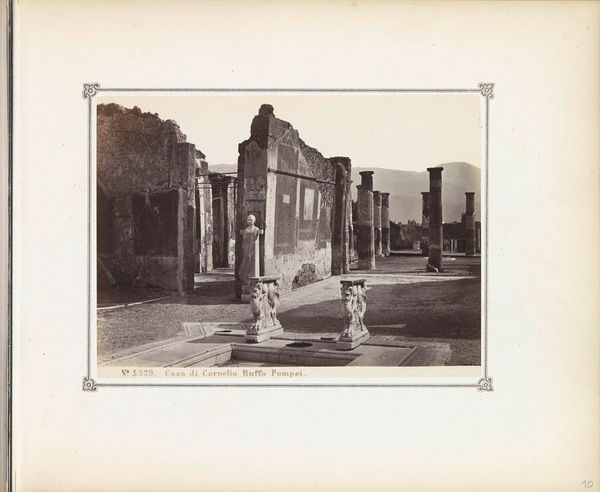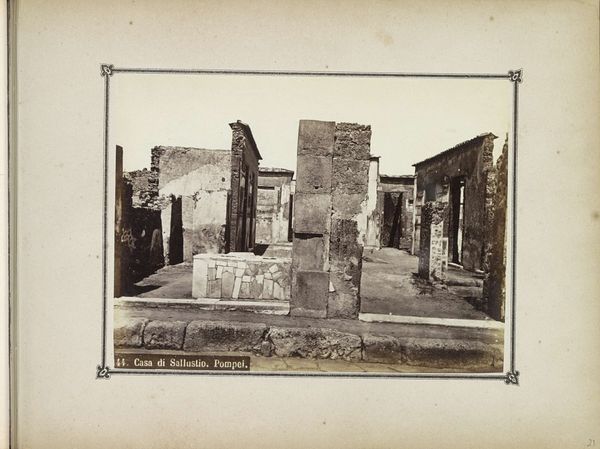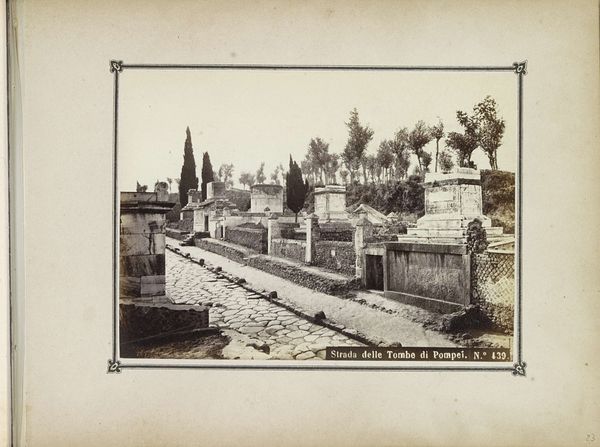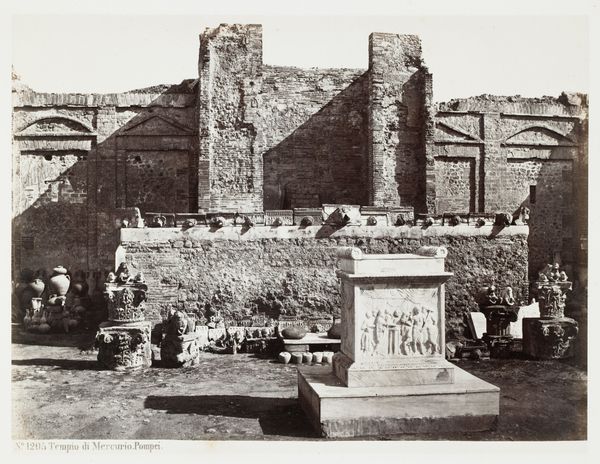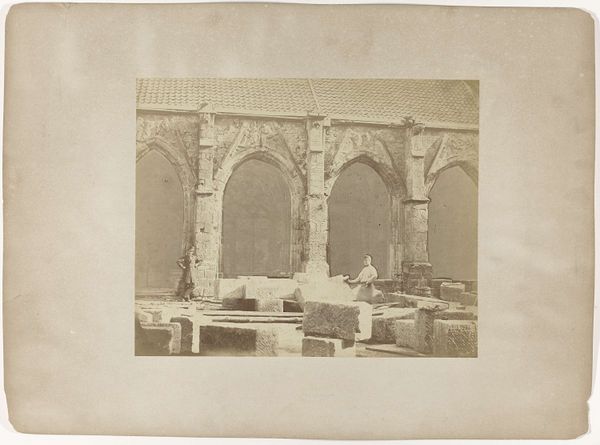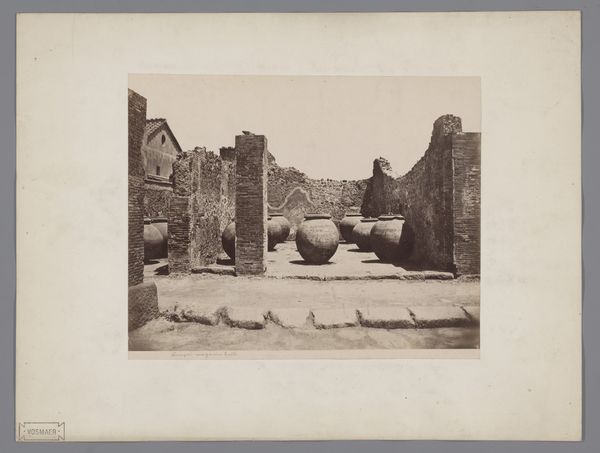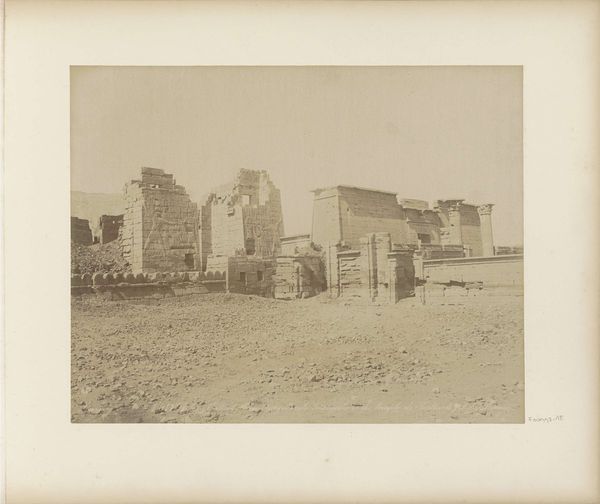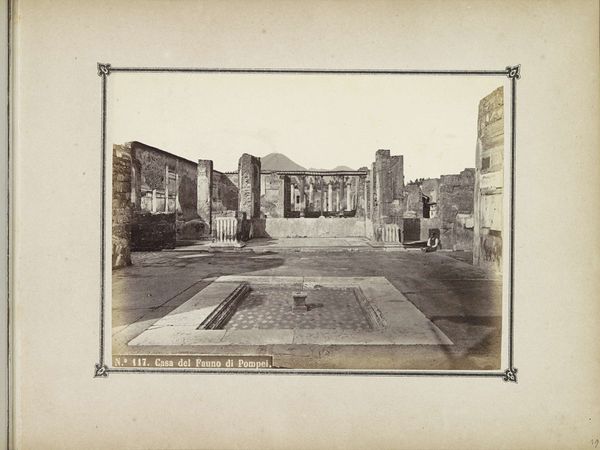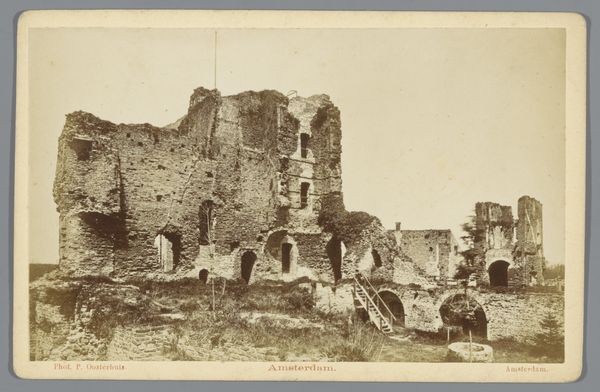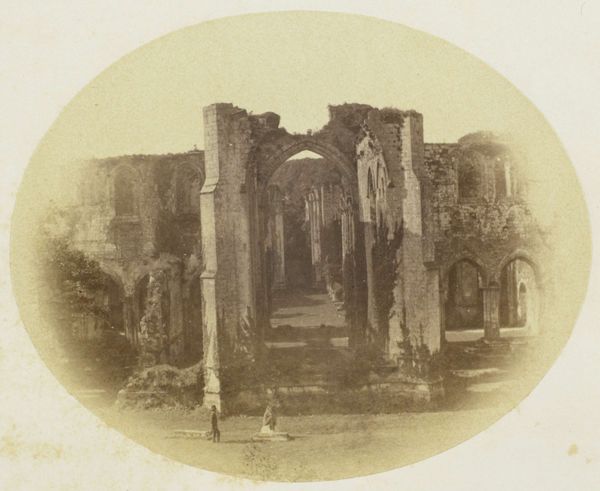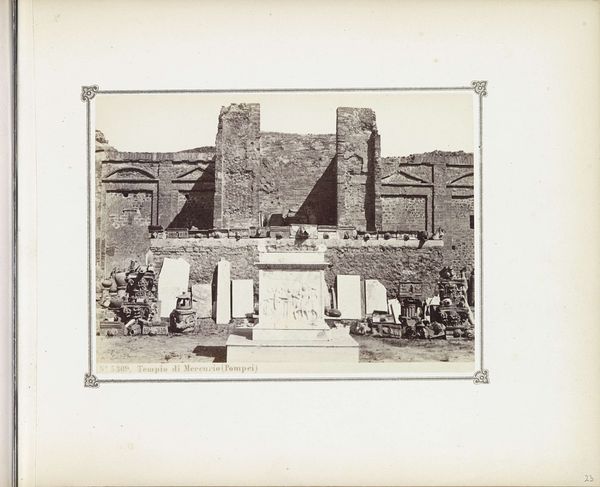
photography, gelatin-silver-print
#
landscape
#
photography
#
ancient-mediterranean
#
gelatin-silver-print
#
cityscape
Dimensions: height 102 mm, width 139 mm
Copyright: Rijks Museum: Open Domain
Curator: This is Roberto Rive's gelatin-silver print, "Restanten van de Tempel van Mercurius in Pompeï," dating from around 1860 to 1900. It has such a stark, still quality to it. Editor: It really does. The photograph presents the remnants of the Temple of Mercury. It’s so interesting to see how an image can capture what remains after immense social and environmental upheaval. What stands out to you the most about this piece? Curator: I’m immediately drawn to thinking about the consumption of ancient sites as tourist destinations for the wealthy elite. This image, itself a commodity, romanticizes ruin. What narratives are being omitted, you know? What about the labor involved in excavating and preserving these sites, then and now? How does its artistic portrayal further consolidate power structures? Editor: That's fascinating. It makes me consider how photography, even then, played a role in shaping our understanding—and perhaps misunderstanding—of history. This photo presents Pompeii as this still life almost, devoid of its complex past. Curator: Precisely. The aesthetic appeal of the ruins can distract from the realities of social stratification, the violence of the eruption, the political motives behind its excavation… Did the ancient Pompeians ever imagine their vibrant lives would be reduced to picturesque decay viewed by tourists, recorded through photographs like these? And by extension, how does our viewing this photograph further perpetuate cycles of historical amnesia and power imbalance? Editor: That gives me a lot to consider. It shifts the focus from the aesthetic qualities to the photograph’s participation in larger historical dialogues, sparking my curiosity about social exploitation and the power of representation. I will need to do more research! Thank you for pointing out its wider historical context. Curator: Indeed. By engaging with the complex issues surrounding historical imagery like this, we contribute to the urgent discourse on colonial legacies in visual culture. It changes how you approach a photograph like this moving forward.
Comments
No comments
Be the first to comment and join the conversation on the ultimate creative platform.
